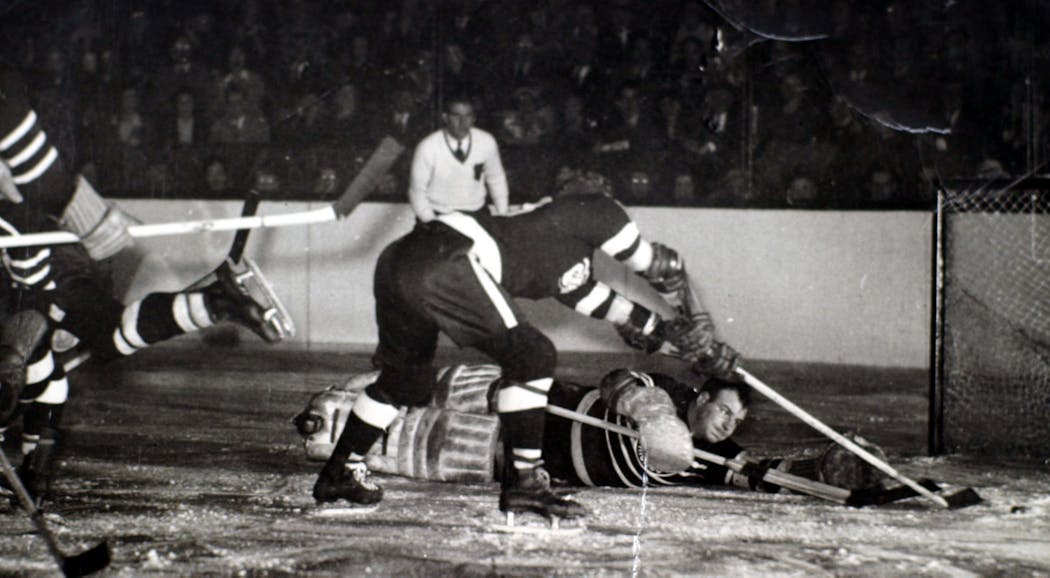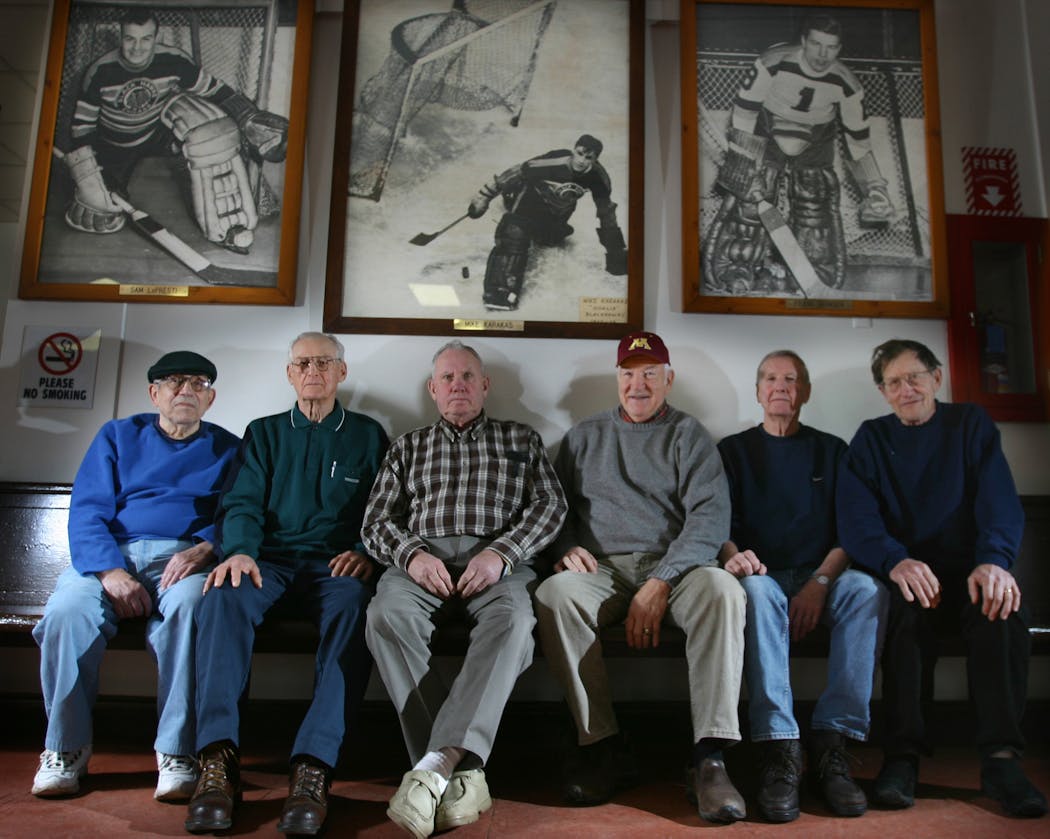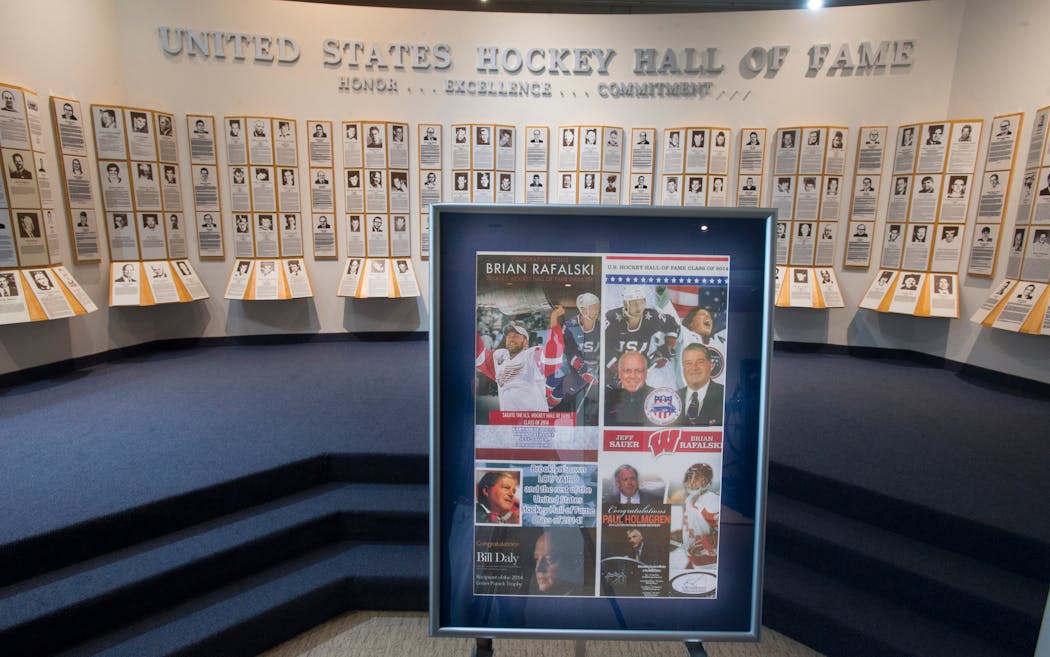Why is the U.S. Hockey Hall of Fame located in tiny Eveleth, Minnesota?
Listen and subscribe to our podcast: Via Apple Podcasts | Spotify | Stitcher
DULUTH — The small Iron Range city of Eveleth is home to an outsized number of pilgrimage-worthy destinations for hockey fans. It boasts a 110-foot-long hockey stick, a famous Hippodrome ice rink and the U.S. Hockey Hall of Fame Museum.
Lifelong hockey fan Mike Ethen wanted to know how the Hall of Fame — located on Hat Trick Avenue — ended up in Eveleth of all places. It is "out of the way and in a small town," Ethen said, similar to New York's Cooperstown National Baseball Hall of Fame and Museum.
"When compared to the regal [Hockey Hall of Fame] in Toronto, it just seems like an unusual choice," Ethen said, referring to the home of the Stanley Cup. He sought answers from Curious Minnesota, the Star Tribune's community reporting project fueled by great reader questions.
Despite its modest population, Eveleth produced a disproportionate number of hockey stars during the 20th century. As Minneapolis Star columnist Jim Klobuchar once wrote, "If U.S. hockey didn't begin in Eveleth, this is where it got its flavor and some of its broken teeth."
No one symbolized Eveleth's long-ago dominance more than John Mariucci and John Mayasich, who remain hockey legends for their achievements ranging from college hockey to the Olympic Games. The Eveleth High School Golden Bears team won four state titles in a row during its heyday — a rare feat. Many Eveleth players went on to the NHL.
"Nobody produced them like Eveleth in the day," said Hall of Fame director Doug Palazzari. "It's a storied history."
The Hockey Hall of Fame in Toronto was established in the 1940s and moved into its first building in 1961. It focuses on the athletes globally who have contributed to the sport.
Eveleth mining executive D. Kelly Campbell proposed building a U.S. Hockey Hall of Fame in Eveleth in the late 1960s. The Eveleth Civic Association then formally applied to the Amateur Hockey Association of the United States — now known as USA Hockey — which approved the proposal at a meeting in Boston in 1968.
The building became a reality in 1973 with the help of a sizable federal grant stemming from legislation sponsored by the area's congressman at the time, U.S. Rep. John Blatnik.
So why have two hockey hall of fames? The Eveleth facility's first director, Roger Godin, told the Minneapolis Tribune in 1977 that the Toronto hall mostly honors Canadian players.
"This Hockey Hall of Fame is set up for the United States," Godin, who is now team curator for the Minnesota Wild, said at the time. "I don't want to build a Hall of Fame on the exploits of Canadian players. I want to bring the Americans in."
The Eveleth facility struggled to attract enough visitors to break even in its early years, based on newspaper accounts. There were discussions in the mid-1980s of moving it to the Met Center in Bloomington to help boost attendance, but they ultimately fizzled.
"Would they move baseball's Hall of Fame from Cooperstown, N.Y. to Manhattan? Or transfer pro football's from the NFL's Canton, Ohio birthplace to Cleveland? Of course not!" the Star Tribune editorial board wrote in 1985, opposing the move.
The museum is dedicated to American hockey players and those who helped develop the sport, from youth hockey to the NHL. It dedicates space to NHL coach and St. Paul native Herb Brooks, the 1980 U.S. Olympic hockey team and one of the first Zambonis ever made, among other exhibits.
Sixteen Eveleth players and coaches are enshrined in the museum's "Great Wall of Fame," including Sam LoPresti, Frank "Mr. Zero" Brimsek, Mike Karakas, Mayasich, Mariucci, Cliff Thompson, Connie Pleban and Mark Pavelich. Pavelich, who died in March, was inducted as a member of that 1980 Olympic team.
The Eveleth museum typically receives between 10,000 and 15,000 visitors a year, compared with the more than 279,000 people who visited the Toronto hall in 2019. Low attendance forced the Minnesota facility to close for a period in the mid-2000s.
The hall is a nonprofit funded through admissions, donations, public funding and grants — including those from USA Hockey.
Godin said this week that the museum remains significant today as the U.S. produces a larger share of players in the NHL, while remaining a minority in the league overall. Roughly a quarter of the players in the NHL are American.
"It's important that our role in the sport be emphasized," he said.
If you'd like to submit a Curious Minnesota question, fill out the form below:
Read more Curious Minnesota stories:
Why isn't it a crime to punch someone in the face in pro hockey?
Playing favorites: What's the story behind Twins' jersey picks?
How did Minnesota become the Gopher State?
What does ski-u-mah mean and how are you supposed to pronounce it?
Why are all of Minnesota's pro teams named after the state, not a city?
If there's a 'Greater Minnesota,' where is 'Lesser Minnesota'?







